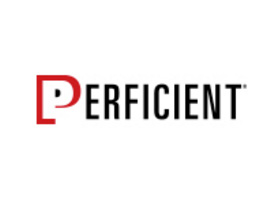(Part One of Seven) Have you ever wondered why some data warehouse projects fails while others do not? I’ve often wondered that myself. I‘ve also observed that more often than not key ingredients are not described robustly enough or even worse not identified at all. By an ingredient I mean a requirement may not be […]
Posts Tagged ‘BI Generic Architectures’
Change Data Capture: Capabilities, UseCases and Offerings: Part 2
The post is the 2nd in the series which covers capabilities, use cases and product offerings for change data capture technology. The critical capabilities which are expected in a CDC tool Selective data replication and synchronization is a capability to synchronize data between multiple databases. It usually supports high volume and mission critical scenarios. An […]
Change Data Capture – It’s all about timing !!
A few weeks ago, I got a gmail chat message from a friend telling me that my favorite sports team was having a great match and that i should definitely watch the match. So I went to the sports portal to get the latest score and see what the team was doing. I found that […]
Information Management Architecture – Part 2
This post is a continuation to my previous post on changes to the Information Architecture in recent times with the advances in Big Data management. This post discusses the 2 common approaches to implementing Big Data in organizations which accommodate Big Data in existing Information Management framework. The two approaches are Knowledge pooling and Knowledge […]
Changes to Information Management Reference Architecture – Part 1
Oracle’s last Data Warehouse reference architecture was released in 2010 and since then the industry has seen a lot of changes in handling data. This is a 2 part series covering the changes to the data warehouse reference architecture incorporating Big Data needs. As Oracle puts it What has changed in the last few years […]
Why are BI projects so difficult to implement? part 2.5
..so I hadn’t planned on exploring the next piece of the puzzle so soon, but this article jumped out at me. I just finished reading “Achieving Greater Agility with Business Intelligence” from the TDWI and found several interesting comments. The article was based around ‘faster decision cycles and competitive pressures’ but it had a few […]
Introduction to Data Quality Services (DQS) – Part II
This is my second blog in a two-part series to introduce Data Quality Services (DQS) in SQL Server 2012. Please refer to my first blog which discusses the interactive client for DQS – Introduction to Data Quality Services (DQS) – Part I. In this blog, I will introduce the SQL Server Integration Services (SSIS) component which […]
Introduction to Data Quality Services (DQS) – Part I
I was recently introduced to SQL Server 2012 and discovered Data Quality Services (DQS); a new feature of SQL Server 2012. I wanted to use this blog as an introduction to DQS, define key terms, and present a simple example of the tool. According to MSDN, The data-quality solution provided by Data Quality Services (DQS) […]
PowerDesigner Tips – Model Patterns
Data model patterns identify common model structures and define how they should look and interact with other parts of the model. PowerDesigner can assist in this process by automating the setup of objects (tables, columns, mappings) based on the pattern to be applied and ensuring consistency through the use of custom model checks. Stereotypes Anyone […]
PowerDesigner Tips – Deploying a Model
In its most basic form, deploying a data model means simply applying the model directly to a database via ODBC or a DDL script. But that neglects much of that value in your model beyond the physical structure. Here are the steps in our model deployment process. We’ve scripted these in the build tool, but […]
PowerDesigner Tips – Utility Scripts
Here’s a few utility scripts I’ve developed to aid in your XEM scripting: Scope Many functions, especially members of ExtensibleObject, require the “scope” or code of the XEM be included when referencing extended attributes, methods, collections, etc. I’ve added these lines to the global script section as a helper: ‘ Extension navigation. All references to […]
PowerDesigner Tips – Exporting Model Metadata
Once you’ve invested the time and effort into creating really solid, well documented data models, it would be really great to let some folks know about it, right!?!? If you’re using PowerDesigner, you’ve got a few options: Use the included (in some editions) web repository. This requires the use of the model repository and displays […]
